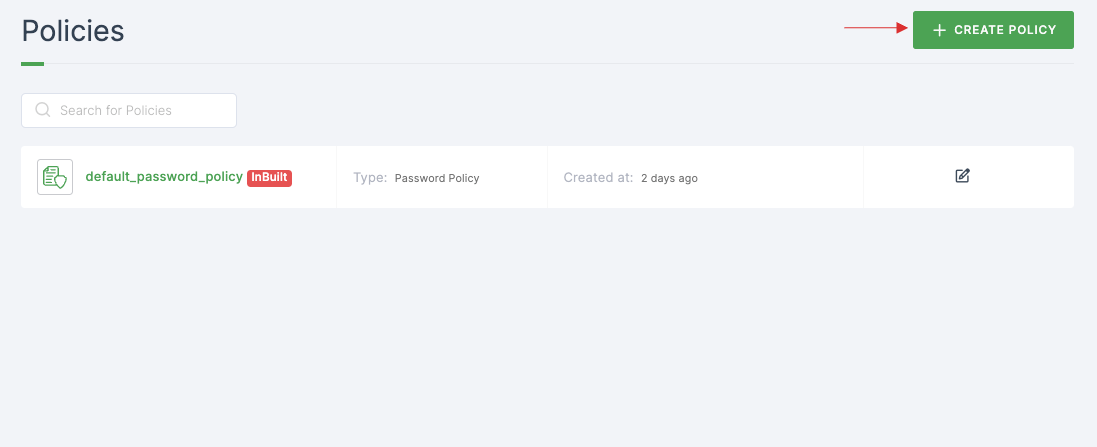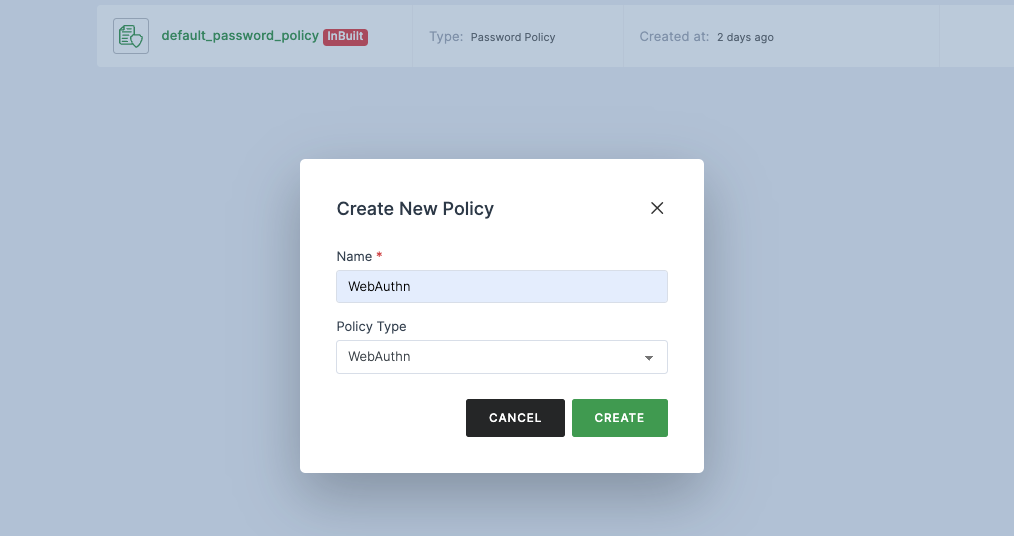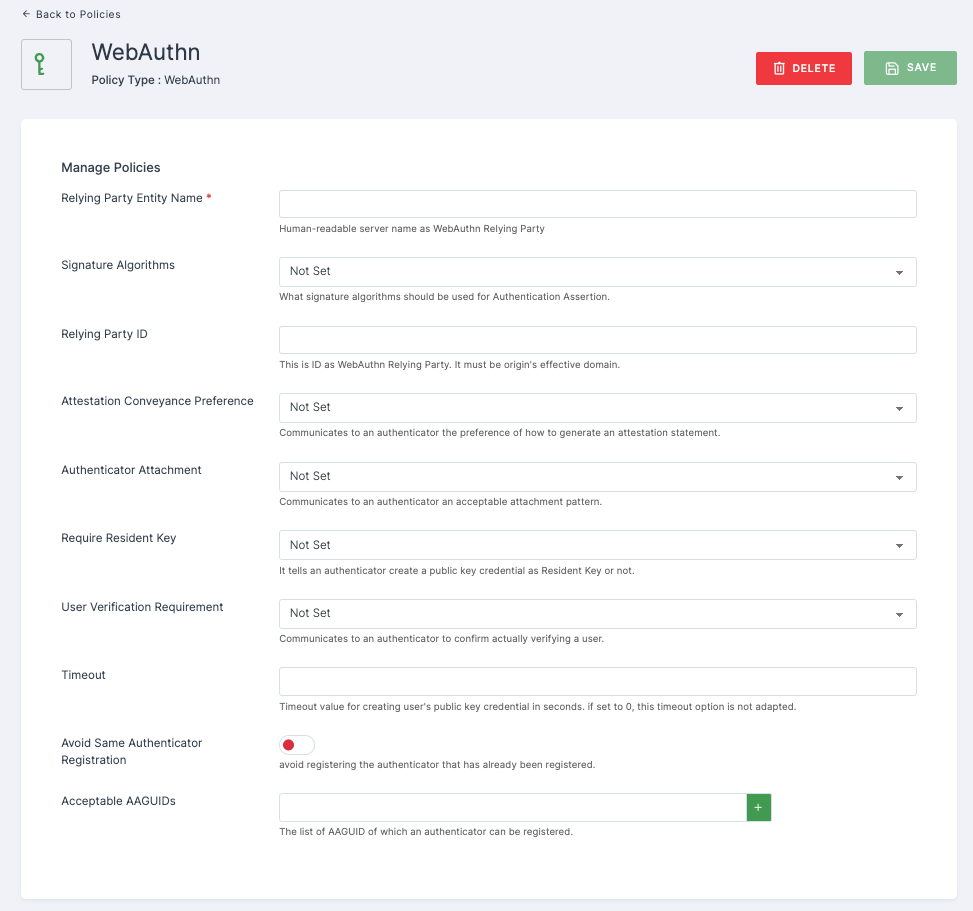WebAuthn Policy
WebAuthn policies are designed to enhance online security by providing strong and convenient methods for user authentication.
Follow the below steps
1 Go to Dashboard > Policies.
2 Click on + CREATE POLICY

3 Provide a descriptive name an select the policy type as WebAuthn from the dropdown.

4 Click on CREATE.
5 You will be moved to the created policy. Set of configurations will be displayed.

Configurations
(*) Indicates that the action is mandatory.
| Configuration | Description |
|---|---|
| *Relying Party Entity Name | Specify the name for the Relying Party Entity. |
| Signature Algorithms | Choose the signature algorithms available for generating the Authentication Assertion. |
| Relying Party ID | This should match the origin's effective domain, ensuring security in the authentication process. |
| Attestation Conveyance Preference | Communicates the preferred method for generating an attestation statement to the authenticator, including Direct, Indirect, or None. |
| Authenticator Attachment | Specifies an acceptable attachment pattern for the authenticator, such as platform or cross-platform. |
| Require Resident Key | Instructs the authenticator to create a public key credential as a Resident Key or not. |
| User Verification Requirement | Communicates the requirement for actual user verification by the authenticator. |
| Timeout | Sets a timeout value in seconds for creating a user's public key credential. If set to 0, the timeout option is not used. |
| Avoid Same Authenticator Registration | When enabled, prevents the registration of authenticators that have already been registered. |
| Acceptable AAGUIDs | Lists the AAGUIDs (Authenticator Attestation Globally Unique Identifier) to which an authenticator can be registered. |
6 After configuring, click on the SAVE.